Abstract
Inhibited sexual desire (ISD) is one of the most common sexual dysfunctions, especially in women. Family physicians have an opportunity to recognize ISD before the associated problems become entrenched, and to guide couples toward satisfactory resolution. A summary is presented of current thinking on ISD and its causes. Case reports and observations about frequency of and treatment for ISD are included. Much less has been written about sexual avoidance in the presence of desire. A definition is offered of simple sexual avoidance in the absence of genital dysfunction. Frequency, treatment response, and specific cases are described. A newly identified entity—mutual unwillingness to importune for sex—is discussed briefly. Counselling which focuses on communication, self responsibility, and sex education is very helpful to patients with sexual problems.
Keywords: Inhibited sexual desire, sexual avoidance, counselling
Full text
PDF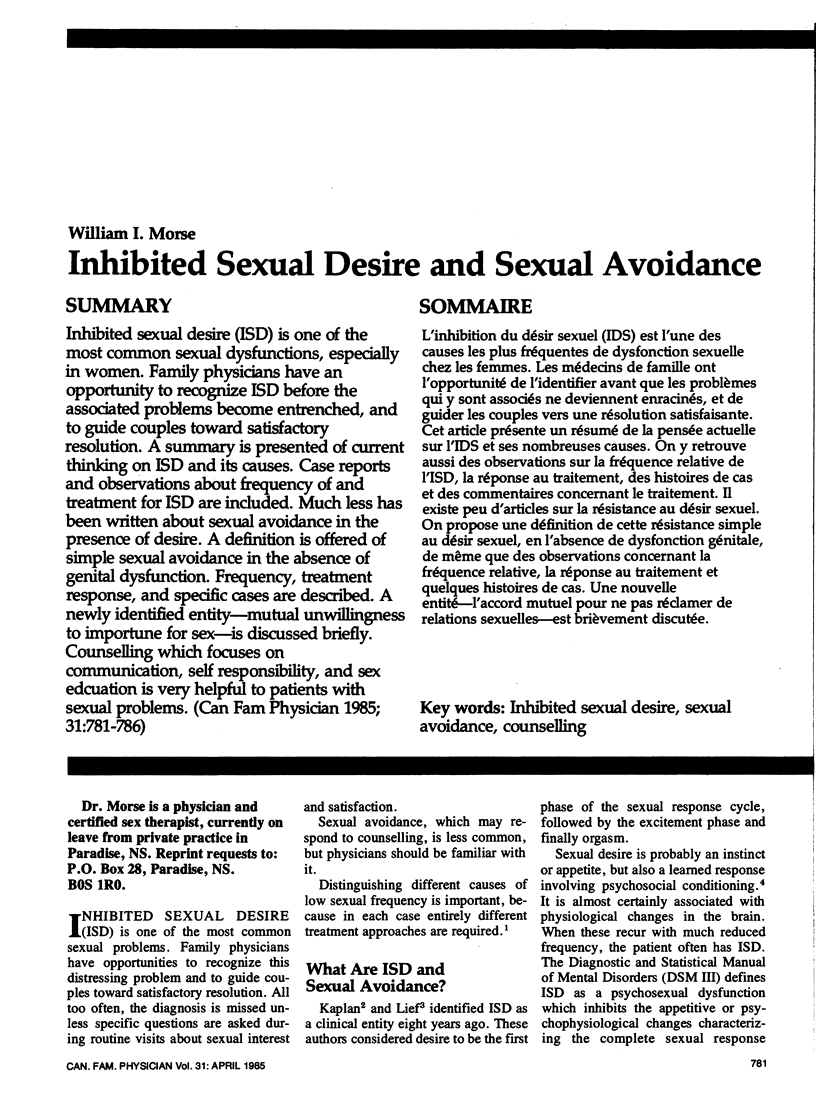
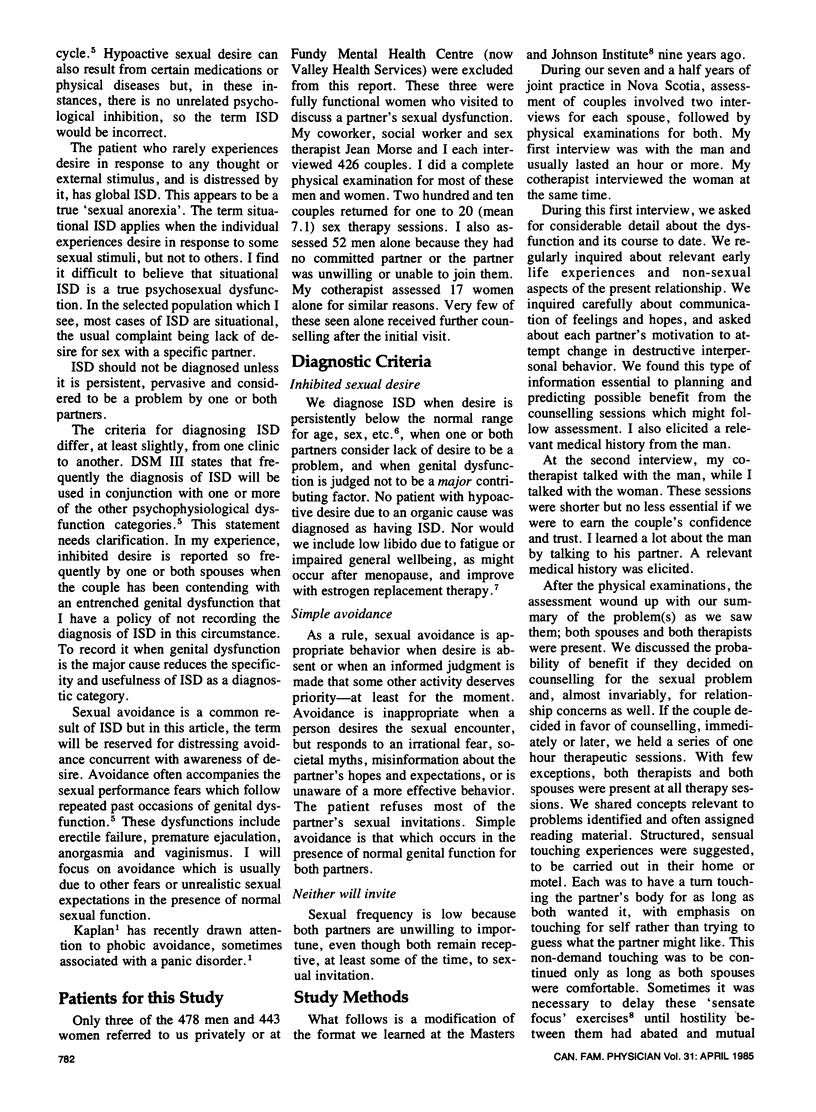
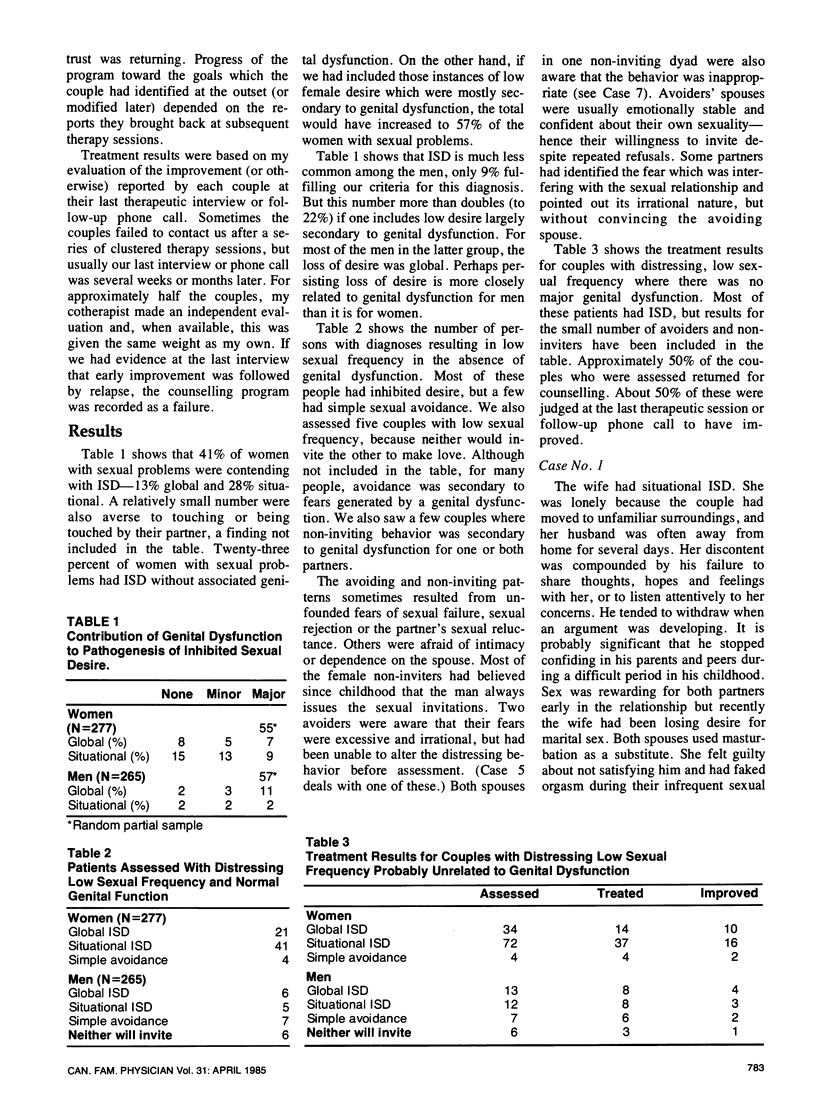
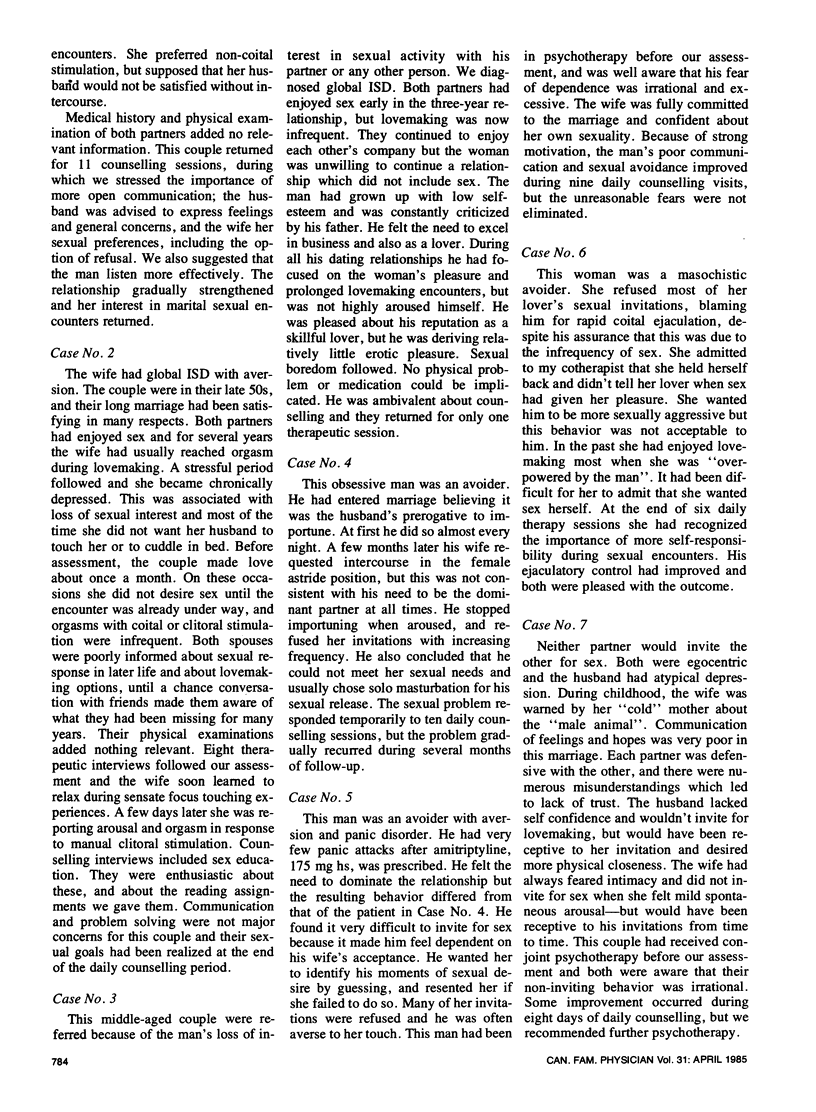
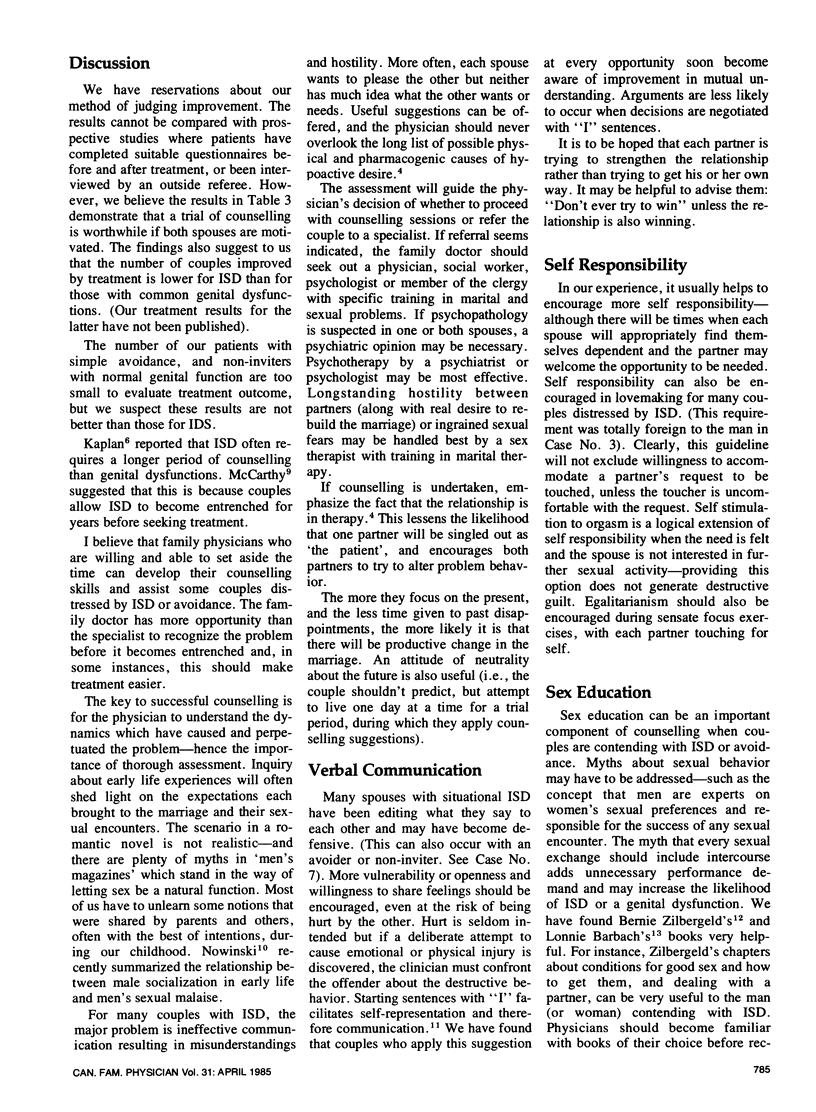
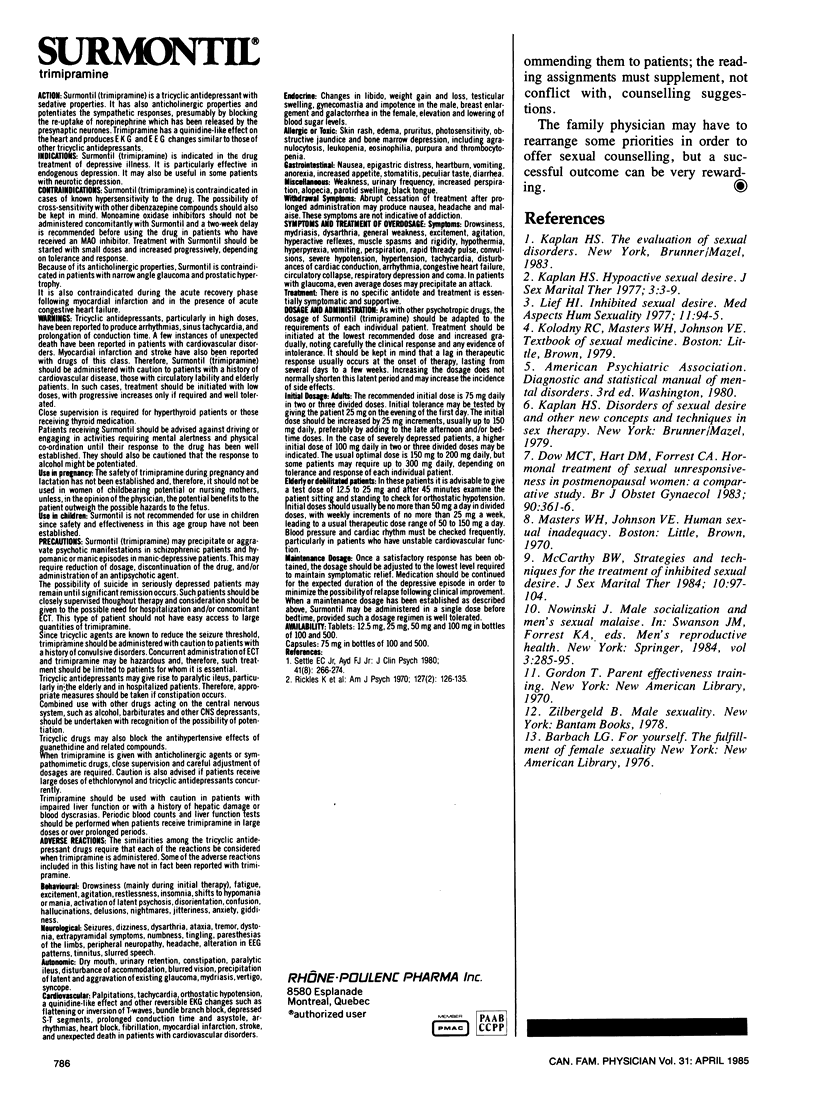
Selected References
These references are in PubMed. This may not be the complete list of references from this article.
- Dow M. G., Hart D. M., Forrest C. A. Hormonal treatments of sexual unresponsiveness in postmenopausal women: a comparative study. Br J Obstet Gynaecol. 1983 Apr;90(4):361–366. doi: 10.1111/j.1471-0528.1983.tb08924.x. [DOI] [PubMed] [Google Scholar]
- Kaplan H. S. Hypoactive sexual desire. J Sex Marital Ther. 1977 Spring;3(1):3–9. doi: 10.1080/00926237708405343. [DOI] [PubMed] [Google Scholar]
- McCarthy B. W. Strategies and techniques for the treatment of inhibited sexual desire. J Sex Marital Ther. 1984 Summer;10(2):97–104. doi: 10.1080/00926238408405795. [DOI] [PubMed] [Google Scholar]


